|
Here is an overview of the
sort of topics an applicant for an FCC
Commercial
Radio Operator License needed to know - back in the 1940s, anyway. Much
of it still applies to obtaining the same license today (click link for more
info). Per the FCC website: You need a commercial operator license to operate,
and/or to repair and maintain, specified ship, and aircraft radio communication
stations. The licensing requirements for operating such radio stations and the
licensing requirements for repairing and maintaining such radio stations are
discussed [herein]." Examples are ships or aircraft traveling to foreign destinations,
ships employing radiotelegraphy (some still do for emergency communications;
e.g., ••• --- •••), and vessels
carrying more than six passengers. A license is required to repair and align
radio, radar, and navigation equipment both onboard and land-based.
Commercial Operator License Examination Managers (COLEMs) and Fees (typically <$100)
can be found at this link. As with most - if not all - government exams, the
complete question
pool with answers is available online.
Advanced Radio Theory for FCC Operator's Exams
By Carl E. Winter
Outline of advanced elements with which prospective licensee must be familiar
before attempting to pass the FCC exams.
Without adequate preparation, some trained electronic engineers would encounter
a few hard nuts to crack in the Federal Communications Commission examinations
for a Commercial Radio Operator License.
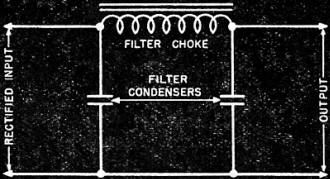
Fig. 1 - Condenser input filter.
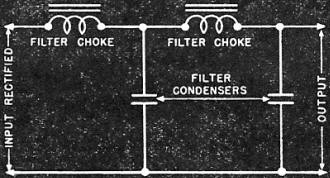
Fig. 2 - Choke input filter.
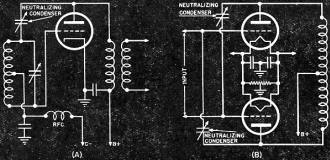
Fig. 3 - Methods of neutralizing single and push-pull output
stages.
A good percentage of the exam's questions apply to the basic principles of
radio and offer little difficulty to ex-hams" and ex-"servicemen," but the premise
upon which the FCC examinations are based is a series of "elements," each of
which requires progressively more advanced technical knowledge.
In addition to "Basic Radio Theory," which appeared in the September issue
of Radio News, understanding the practical aspects of the commercial operator's
work and the application of radio principles to actual equipment in use are
required in these advanced elements. Therefore, the following classifications,
including the scope of subjects covered, may be of assistance to prospective
licensees who are planning a preparatory course of study.
Mathematics
Ohm's Law problems involving application of the Law to circuit analysis occur
frequently. These arithmetical problems are easily solved when a knowledge of
when and where currents and voltages appear in any given circuit is obtained.
You should know, for example, that a milliammeter connected between the center
tap of a filament transformer and ground, will read the combined plate and grid
currents of a simple triode stage. You should also be able to analyze other
components of a circuit in similar fashion.
Ability to make mathematical computations pertaining to decibel gain or loss
is required, particularly for applicants for Radiotelephone licenses. Ratios
between average, effective and peak values of a sinusoidal wave should be memorized,
as problems utilizing these values occur frequently.
Formulas for computing, the angle of lead or lag of current with reference
to voltage in an a.c. circuit should be learned and the meanings of "leading
power factor" and "phase difference" understood. Study of phase angles will
be simplified if you remember that in an a.c. circuit, a series condenser causes
the current to lead the voltage and that when inductive reactance predominates
in the circuit. current lags the voltage.
The importance of the formulas for reactance and impedance should not be
underestimated. The formula for determining impedance at resonance is essential
and the values of reactance in series, parallel, and series-parallel circuits
should be known.
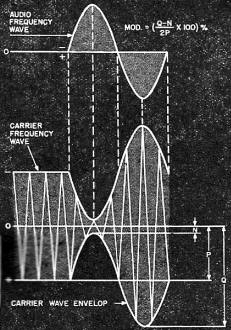
Fig. 4 - Modulated carrier wave.
The student should not become too perturbed at the vast array of mathematical
problems which will confront him when he opens his examination sheet. All these
problems are based on specific formulas and should present no difficulty provided
these formulas have been learned well.
Motor Generators
Questions pertaining to motor generators will be primarily mathematical and
concern the "efficiency" and "regulation" of this equipment as well as for rectifier
power supplies. "Efficiency" and "regulation" are not just terms but have definite
mathematical formulas which are essential.
Rectifier Tubes
Possessing basic knowledge of vacuum tube principles simplifies the specialized
requirement for rectifier tubes. The various types, and their respective advantages
and disadvantages should be understood; and "inverse peak voltage" mathematical
problems, in which sinusoidal wave ratios are applied, occur frequently.
Rectifiers
A knowledge of the principles of rectification is not sufficient for the
examinations in the advanced elements. Formulas for the computation of ripple
frequencies, the circuits for half-wave, full-wave, and bridge rectifiers should
be learned. Mechanical rectifiers cannot be ignored for you may encounter a
question or two pertaining to them.
Filters
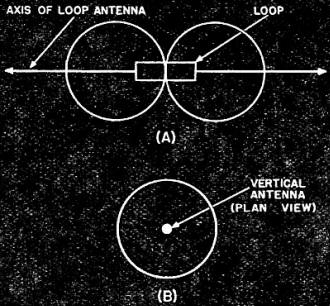
Fig. 5 - Antenna directional characteristics.
The function of the filter network in conjunction with a rectifier circuit
is another must for prospective licensees. The effects of inductances and condensers
in filters (see Figs. 1 and 2), the characteristics of "swinging chokes" and
the applications of bleeder resistances should be mastered.
An analysis of the differences between low-pass and high-pass filters, as
shown in Fig. 6, paves the way for the study of attenuators, line pads, line
equalizers (Fig. 7), and mixers. The functions and principles of these various
networks should be mastered, and their methods of connection to, and effects
upon, circuits understood.
Impedance matching, Fig. 8, and the proper termination of transmission lines
should be studied, particularly by those interested in Radiotelephone licenses.
Crystals
As crystals play an important part in all radio equipment their function
in stabilizing oscillators should be studied carefully. To assure adequate knowledge
of crystal principles, the student should understand the meaning of, and terms
used, in referring to crystal temperature coefficients and learn to solve mathematical
problems which involve the crystal temperature coefficient in determining a
transmitter's output frequency.
Oscillators
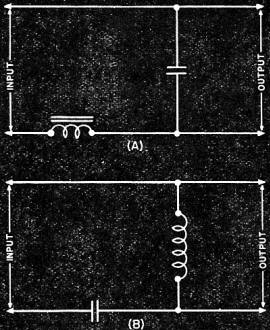
Fig. 6 - (A) Low-pass filter. (B) High-pass filter. The
condensers and inductors are designed to attenuate the higher frequencies (A)
and the lower frequencies (B).
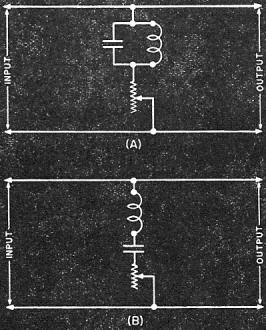
Fig. 7 - Equalizers. Parallel resonance is depicted in (A)
while (B) shows the equalizer as a series resonance type.
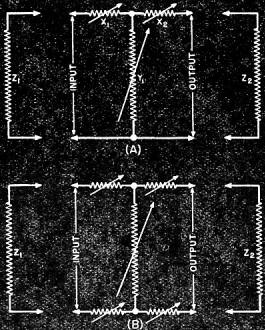
Fig. 8 - (A) T-type pad. (B) H-type pad. Input terminals
of the attenuation networks connect to microphone Z1,while the output
connects to amplifier shown as Z2.
Comprehension of the basic oscillator circuits such as Colpitts, Hartley,
MOPA and tuned-plate tuned-grid is vitally necessary. Surprisingly enough, the
Commission demands a thorough understanding of ancient spark and arc oscillatory
circuits.
The multi vibrator, or relaxation oscillator, possesses peculiar characteristics
of its own and should be studied as an individual type of circuit.
Electron-coupled, dynatron, and crystal oscillators should also be understood
and the ability to draw any of the basic oscillator circuits from memory is
an asset.
The student should know which oscillator circuits are particularly useful
for generating harmonics and understand the several methods of keying a transmitter.
Receivers
Inasmuch as many receivers utilize oscillators in regenerative circuits,
the principle of regeneration should be understood. In regard to this, an understanding
of the relationships of signal frequency, beat frequency and image frequency,
as well as the ability to make simple computations pertaining to them, should
be mastered.
Other types of receivers, such as, plate, grid leak, power, and diode detectors
should not be neglected. Sufficient knowledge of receiver principles should
be obtained to enable the student to answer trouble shooting questions. Learn
what the super-heterodyne circuit is!
Amplifiers
A thorough understanding of amplifiers and their classes of operation is
perhaps the most crucial part of the requirements. All types of amplifier circuits
should be studied, and here again the ability to trouble shoot, at least on
the examination sheet, is essential. Special emphasis is placed on the principles
of modulating amplifiers and the student should stress modulator circuits in
his preparation for the examination.
Neutralization
The purposes and methods of neutralizing a radio frequency amplifier; how
to test for proper neutralization and the instruments used in such tests should
be studied. Problems covering methods of neutralization (see Fig. 3) may occur.
Modulation
The heart of all radio broadcasting systems is modulation. This is a major
subject in itself, and, broadly speaking, one can't know too much about it.
Particular attention should be paid to high and low level, grid and plate modulation.
Although frequency modulation is with us, insofar as the FCC examinations
are concerned, it remains something which the broadcast operator must prevent
at all costs in his AM transmitter.
Investigate the causes of carrier and frequency shift and the results of
over and under excitation! Learn exactly what overmodulation is and its effect
upon transmitters! The ability to draw a carrier wave envelope and indicate
on that drawing the dimensions from which the percentage of modulation is determined
(Fig. 4) will be very helpful. Mathematical formulas for determining percentage
modulation must be learned and trouble shooting in modulators is quite important.
The fluctuations and percentages of increase in antenna current and power
during modulation should be understood. Possession of adequate knowledge of
the principles of modulation will do much to clarify other principles of radio
broadcast operation.
The foregoing outline might be considered the backbone of the knowledge required
to pass the FCC examinations.
Getting back to mathematics, for a moment, formulas used in determining the
resonant frequency of an antenna and the methods whereby these frequencies may
be raised or lowered should also be learned. The directional characteristics
of loop and vertical antennas must be known, as shown in Fig. 5. The formula
for determining antenna resistance and current is simply an adaptation of basic
Ohm's Law but should not be overlooked.
For the student who is interested in the Radiotelephone license, a knowledge
of the respective advantages and disadvantages of lateral and vertical methods
of transcription is required.
For those prospective licensees who are trying for a Radiotelegraph license
a good deal of emphasis should be placed upon the operation and trouble shooting
in auto alarms. This is a complex subject but the FCC is interested in knowing
whether you can operate, adjust and maintain the two types of auto alarms in
common use.
The basic principles of radio, and you will certainly know them if you succeed
in passing the FCC examinations, will carry you through the complexities of
auto alarms.
The most important thing for the student to remember when preparing for the
FCC Commercial Operator's examination is that without a solid background of
radio fundamentals, the examination cannot be passed! The student must review
radio fundamentals until this basic material becomes second nature to him when
he sits down to take that important examination.
Posted March 26, 2021
|

















